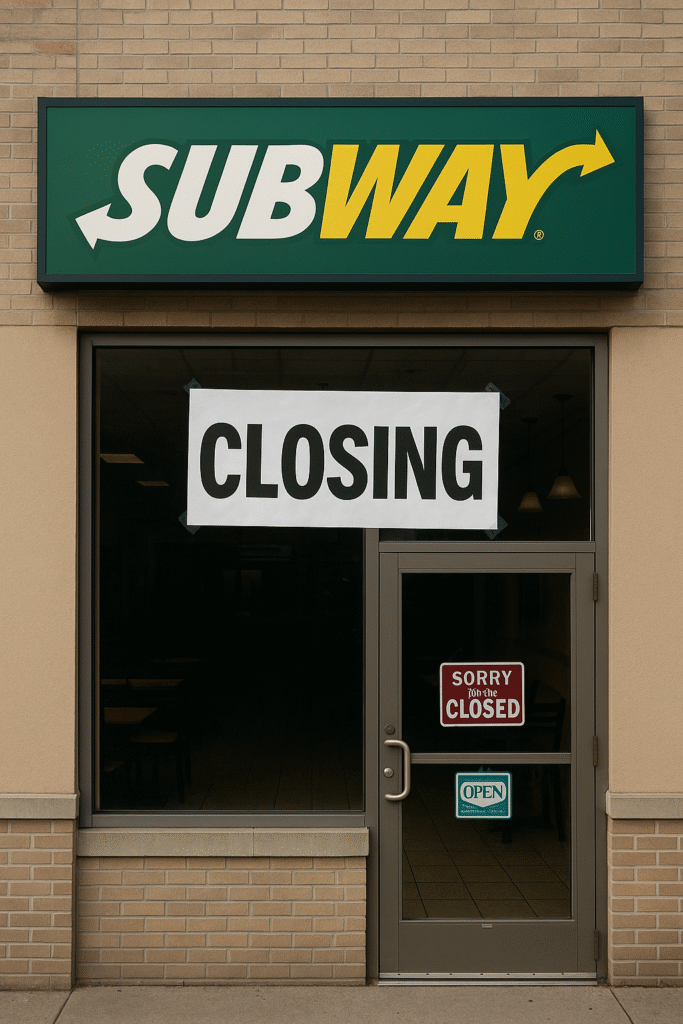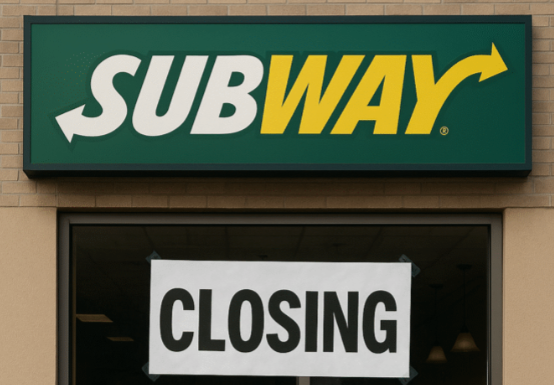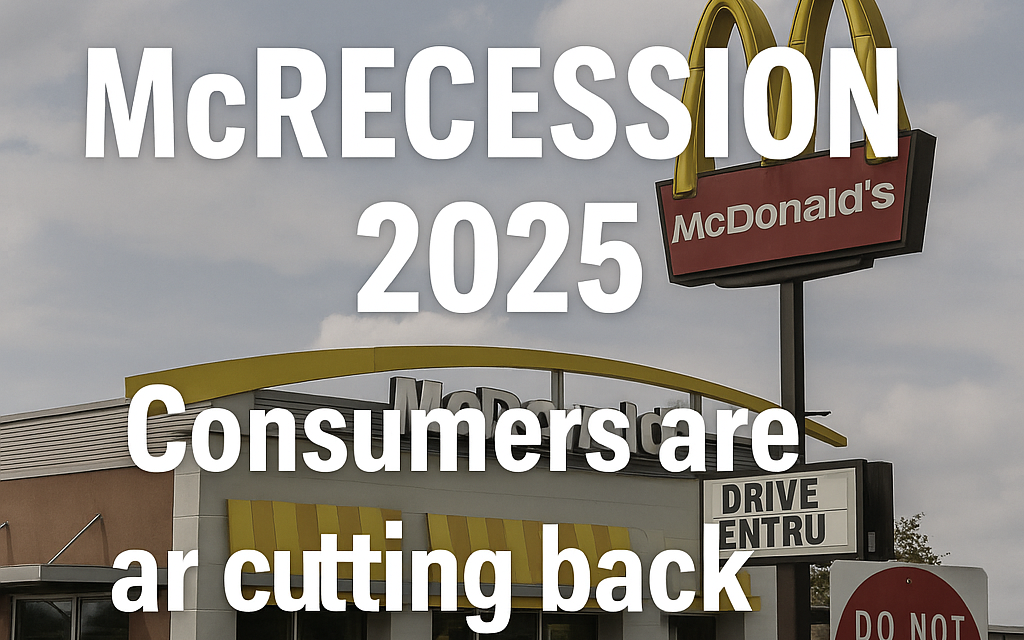Why Is Subway Closing Stores ? The once-dominant fast-food chain Subway is facing one of the most turbulent phases in its history. Once a staple for quick, affordable, and “fresh” sandwiches, Subway is now on a rapid decline — closing hundreds of locations across the United States. But why is Subway closing stores, and what does it mean for the future of the brand?
Let’s break it down.
A Steady Decline Over the Years
Subway was once the largest fast-food chain in the U.S. by number of locations, even surpassing McDonald’s. At its peak, Subway had over 27,000 U.S. stores. However, recent reports show a dramatic drop, with over 600 stores shut down in the past year alone — and that number is expected to grow.
So, what’s causing this shrinkage?
1. Oversaturation of Stores
One major reason for Subway’s decline is oversaturation. In an effort to dominate the market, Subway opened too many stores — often within close proximity to each other. This led to competition within the brand itself, causing many franchisees to struggle with profitability.
When a single neighborhood has three Subway stores, each of them suffers from low traffic. Eventually, underperforming outlets get shut down.
2. Changing Consumer Preferences
The fast-food landscape has evolved dramatically. Today’s consumers want more customization, healthier options, premium ingredients, and unique dining experiences. While Subway once capitalized on the “Eat Fresh” movement, newer chains like Chipotle, Sweetgreen, and Jersey Mike’s have taken that appeal to the next level.
Subway, despite recent efforts, has struggled to stay relevant to Gen Z and younger millennials who are driving the food trend conversation.
3. Franchise Model Challenges
Subway’s franchise model has been under scrutiny for years. Franchisees have long complained about high operational costs, low profit margins, and intense pressure to offer frequent promotions.
Additionally, many store owners have alleged poor support from corporate, making it harder to survive in today’s competitive market.
4. Management and Scandals
Let’s not forget the brand’s PR issues. Subway faced a series of public relations disasters over the past decade, from controversies with past spokespeople to lawsuits related to the quality of their ingredients (remember the “Is this real tuna?” story?).
These scandals eroded consumer trust and drove many loyal customers to competing brands.
5. Economic Pressures Post-Pandemic
The COVID-19 pandemic had a devastating impact on many food service businesses, and Subway was no exception. While some fast-food giants bounced back quickly, Subway lagged behind. Rising rent, labor shortages, and inflation have made it harder for small franchise operators to keep their stores running.

Subway’s Response and Future Plans
Despite the bad news, Subway hasn’t given up. In fact, the company is trying to reinvent itself. Here’s what they’re doing:
- Menu Overhaul: Subway recently introduced new sandwiches and improved ingredients under its “Eat Fresh Refresh” campaign.
- Store Redesigns: Many locations are being remodeled to match modern dining aesthetics.
- Tech Upgrades: Subway is investing in better online ordering and delivery systems.
- Global Focus: The brand is shifting some of its growth efforts to international markets where it still has strong appeal.
Will Subway Survive?
The big question is: Can Subway make a comeback? While store closures are alarming, they might be a strategic move to cut the fat and focus on profitable regions. If the company can modernize its offerings and rebuild its reputation, there is still hope.
But for now, the closures are a clear sign that the brand is in trouble — and only time will tell whether Subway can rise again or fade away like other fast-food legends.
Final Thoughts
If you’ve been wondering why is Subway closing stores, it comes down to a mix of internal missteps, shifting consumer tastes, and economic pressures. It’s a cautionary tale of how even the biggest brands can fall behind if they fail to adapt.
Frequently Asked Questions
Why Is Subway Closing Stores ?
Subway is closing stores due to a mix of oversaturation, falling sales, changing consumer preferences, franchise disputes, and economic pressure after the pandemic. Many locations were too close to each other, leading to internal competition and declining profits.
How many Subway stores have closed recently?
In the past year alone, Subway has closed over 600 locations in the U.S. The total number of U.S. stores has dropped significantly from its peak of 27,000+.
Is Subway going out of business?
No, Subway is not going out of business, but it is downsizing and restructuring. The company is focusing on modernizing stores, updating the menu, and targeting international growth.
What is Subway doing to recover?
Subway has launched the “Eat Fresh Refresh” campaign with updated ingredients, improved recipes, and new sandwiches. They are also redesigning stores and investing in digital ordering to compete in the modern fast-food space.
Are other fast-food chains also closing stores?
Yes, some other chains have also closed stores, especially during and after the COVID-19 pandemic. However, Subway’s closures are more prominent due to its large number of locations and unique franchise model.
You may also like to read :
Why Is Kohl CEO Fired ? The Full Story Behind Ashley Buchanan’s Exit
What is Grand Theft Auto VI : Release Date, Features, and Storyline




